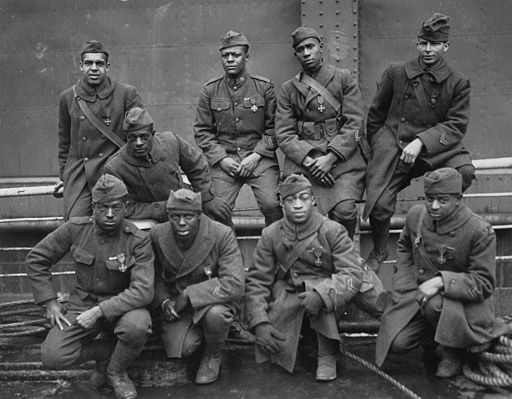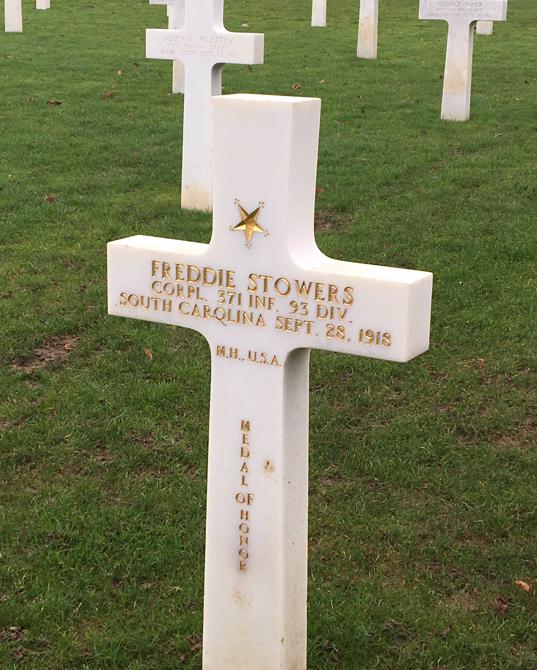In honor of Black History Month, we thought we’d share some stories uncovered during our travels about the inspirational African-Americans who are part of the fabric of our local history in the South Carolina Upstate.
Did you know that Spartanburg was the training ground for the first American soldiers who served in World War I? In 1917, the 15th New York Infantry, an all-black regiment under the command of primarily white officers, was sent to Jim Crow-era Spartanburg for training at Camp Wadsworth. The men were greeted with fierce racial tension in the local community, which ultimately led to them being shipped out of Spartanburg after just two short weeks of training. As the first American soldiers to arrive in a devastated Europe in early 1918, they were a beacon of hope, warmly welcomed as heroes by the French. They also brought something else with them that uplifted and delighted the war-weary Europeans: jazz.
Nicknamed the “Harlem Hellfighters,” and reorganized as the 396th Infantry, these men were the longest serving American troops on the front lines and saw some of the war’s bloodiest battles. Due to institutional racism, they served not as part of the American forces, but were integrated into French and British units that desperately needed more men in the trenches. Some of these soldiers would choose to stay in France after the war, where they experienced far less discrimination than at home. The jazz that they brought across the Atlantic would take off in 1920s Paris as an integral part of les Années Folles.
Another World War I African-American hero is South Carolinian Freddie Stowers. Born and raised in Anderson County, Stowers enlisted in 1917, and fought in the famous Meuse-Argonne campaign in the fall of 1918. On September 28th, his company led an assault on a heavily defended German-held hill. The Germans appeared to surrender, and then, as Stowers’ company approached, they re-opened fire. His commanding officer was killed, along with over half of the original platoon. Though all hope seemed lost, Stowers rallied the remaining men, and they managed to take the first line of German trenches under heavy fire. Mortally wounded, Stowers continued to lead his men until he could not go on, galvanizing them to push forward and successfully capture the hill.
Just 22 years old at the time of his death, Freddie Stowers was posthumously recommended for a Medal of Honor for his “conspicuous gallantry, extraordinary heroism, and supreme devotion to his men” – the first African-American to receive this highest honor during World War I. His family would not receive his award until 73 years later, in 1991. His Medal of Honor is now on display in the South Carolina Military Museum.
Uncover more moving World War I stories with Explore Up Close on our “All Quiet on the Western Front” trip to France and Belgium.
Resources:
For further reading about the Harlem Hellfighters:
https://www.hmdb.org/marker.asp?marker=21237
https://www.goupstate.com/news/20120226/during-wwi-camp-wadsworth-brought-the-world-to-spartanburg
For further reading about Freddie Stowers:
https://www.nps.gov/people/freddie-stowers.htm
https://www.army.mil/article/9075/medal_of_honor_recognition_long_overdue
http://www.cmohs.org/recipient-detail/2595/stowers-freddie.php


